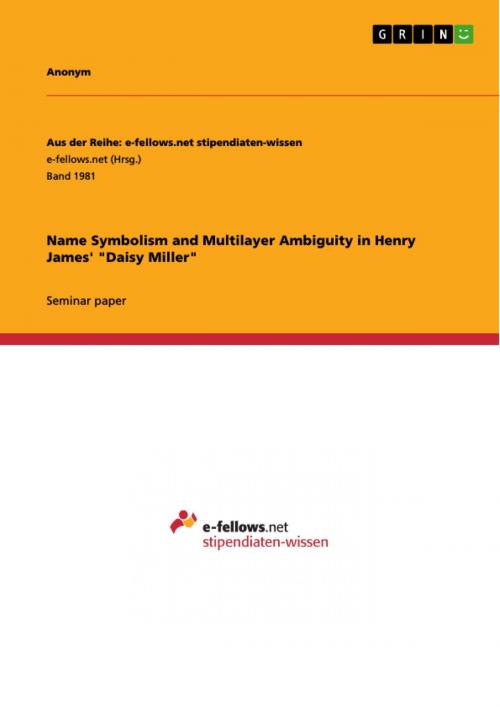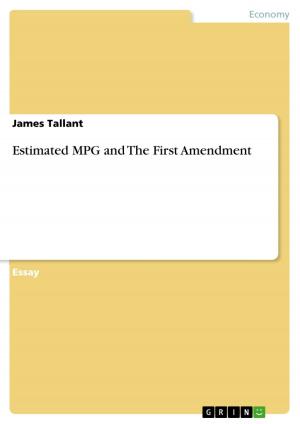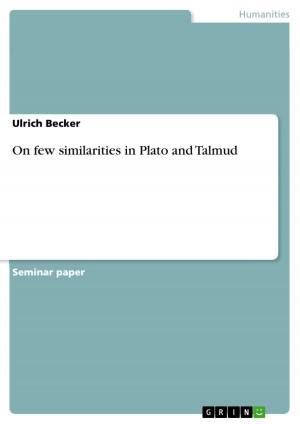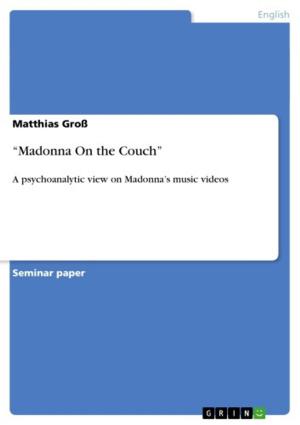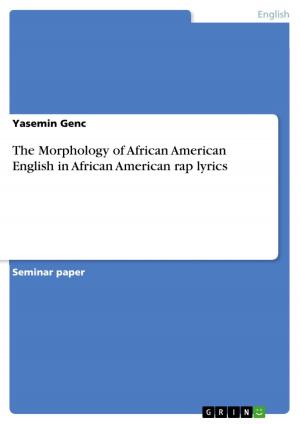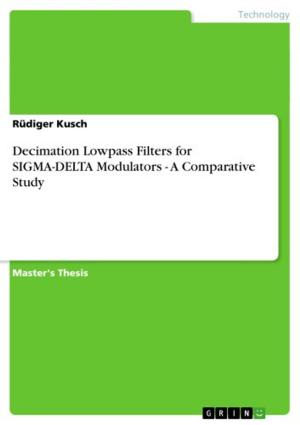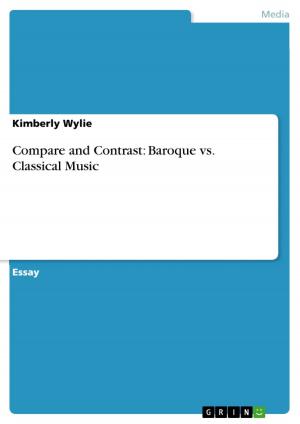Name Symbolism and Multilayer Ambiguity in Henry James' 'Daisy Miller'
Nonfiction, Entertainment, Drama, Anthologies| Author: | Anonymous | ISBN: | 9783668258815 |
| Publisher: | GRIN Publishing | Publication: | July 13, 2016 |
| Imprint: | GRIN Publishing | Language: | English |
| Author: | Anonymous |
| ISBN: | 9783668258815 |
| Publisher: | GRIN Publishing |
| Publication: | July 13, 2016 |
| Imprint: | GRIN Publishing |
| Language: | English |
Seminar paper from the year 2014 in the subject American Studies - Literature, grade: 1,3, University of Passau, language: English, abstract: Beginning with a summary of Henry James's novella 'Daisy Miller: A Study', written in 1887 when the movement of literary Realism was just about to emerge as a counterforce to the exuberance of Romanticism, I will continue to explain the several layers of ambiguity that can be found in this text. After briefly outlining what are the different layers of ambiguity that can be found here, I will connect his extensive use of polarities to the name symbolism, which not only includes hints as to what will be the characters' fate or, in the case of Mrs. Costello or Eugenio, might even include an ironic component. I will then pose the question that 'torments Winterbourne' (Lode, 19) all throughout the story: Is Daisy's behavior particularly American, or is it caused by her personal inability to adapt to European standards or simply by her unwillingness? Thus asking if her death was pre-determined because of her typical behavior, of if she died as a martyr of her own belief in personal freedom? As an example of the Realistic components of the text, I will explain James's use of types before contrasting this with several romantic elements that can be found and explaining why Daisy could have been originally composed as a Romantic character. The last proof of Romantic elements will be the alignment of 'Daisy Miller' and the Aristotelian drama, making Daisy the tragic hero of the story and explaining why James so explicitly emphasized her virtuousness in the end by repeating three times that she was 'the most innocent' (James, 63). My discussion about the meaning of the subtitle however, again brings up the question to what extent this novella can be unambiguously assigned to either literary period, for 'precisely because [of] what is forward- looking in James has been so widely and adequately recognized, the provenance of his work in Romantic literary tradition has been [...] overlooked' (Foger, 1).
Seminar paper from the year 2014 in the subject American Studies - Literature, grade: 1,3, University of Passau, language: English, abstract: Beginning with a summary of Henry James's novella 'Daisy Miller: A Study', written in 1887 when the movement of literary Realism was just about to emerge as a counterforce to the exuberance of Romanticism, I will continue to explain the several layers of ambiguity that can be found in this text. After briefly outlining what are the different layers of ambiguity that can be found here, I will connect his extensive use of polarities to the name symbolism, which not only includes hints as to what will be the characters' fate or, in the case of Mrs. Costello or Eugenio, might even include an ironic component. I will then pose the question that 'torments Winterbourne' (Lode, 19) all throughout the story: Is Daisy's behavior particularly American, or is it caused by her personal inability to adapt to European standards or simply by her unwillingness? Thus asking if her death was pre-determined because of her typical behavior, of if she died as a martyr of her own belief in personal freedom? As an example of the Realistic components of the text, I will explain James's use of types before contrasting this with several romantic elements that can be found and explaining why Daisy could have been originally composed as a Romantic character. The last proof of Romantic elements will be the alignment of 'Daisy Miller' and the Aristotelian drama, making Daisy the tragic hero of the story and explaining why James so explicitly emphasized her virtuousness in the end by repeating three times that she was 'the most innocent' (James, 63). My discussion about the meaning of the subtitle however, again brings up the question to what extent this novella can be unambiguously assigned to either literary period, for 'precisely because [of] what is forward- looking in James has been so widely and adequately recognized, the provenance of his work in Romantic literary tradition has been [...] overlooked' (Foger, 1).
